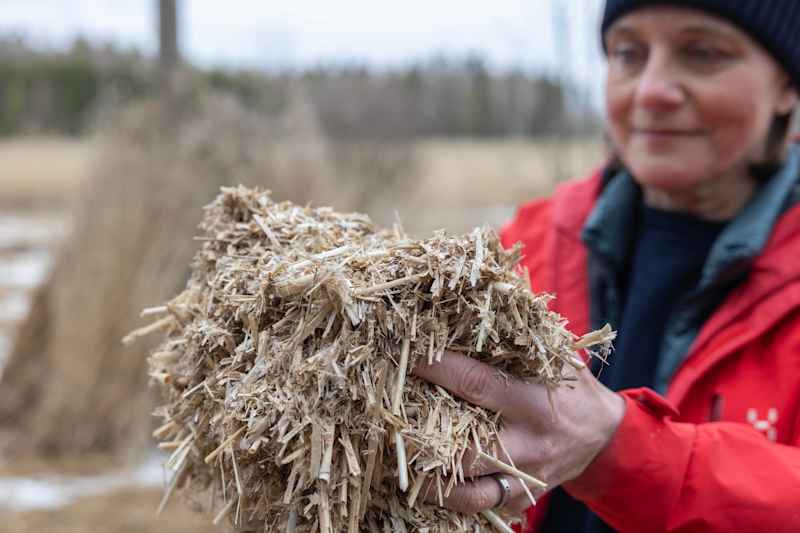This is how reeds bow down to the mower – overgrown banks could be a bonanza of biomass
Over the decades, lake reeds have spread out of control and the shores of the Baltic Sea have become overgrown. A new project is exploring how the reed can be used.
In Östersundom Bay, on the border between Helsinki and Sipoo, a dense reed bed faces a superior opponent: the crawler beast.
In its former life it was a snow plough, but now it’s been tuned into a mower that effortlessly pulls the grass flat and picks up the wood chips.
The reeds have been mowed for conservation reasons for years, but the mown reed mass is often left on the shore to rot.
Then the nutrients binding to the food will end up in the sea, and the meadow will become a zero sum game. And in a couple of years, the bare shoreline is once again bushy.
The overgrown beaches of the Baltic Sea are now becoming a horn of renewable biomaterial. The EU -funded Balticreed project is looking for new applications for Ruo.
– That is, how to make the material made products, how to keep the beaches open and remove nutrients from the Baltic Sea, while creating continuous business, Jaari says.
This is why the reeds got out of hand
On the shores of the eutrophic sea, the lake reed, which grows up to tens of hectares, forms dense reeds.
The change in agriculture has made it possible to effective lake reed throughout Finland. Especially on the south coast, the reeds have grown recklessly and covered the whole bays.
– The reeds have increased in Finland quite a bit. Land use practices have changed and nutrient castings from the ground to the sea have increased, says Jaari.
The fields are fertilized on a completely different scale than in the past decades and warm, rainy winters flush nutrients from the sea -free fields.
In addition, as society changes, the agricultural society’s own mowers, cows and sheep have disappeared from the seaside.
More than 100 years ago, a photograph of the Östersundom manor illustrates well how prominently the scenery has changed on the coast.
However, in the same breath, it must be mentioned that the reeds are not just a crush of sorrow. They provide birds for breeding and a huge amount of insect nutrition.
The natural value of the reeds has been taken into account in the project, including here in Östersundom, where the meadow saves islands for beach life needs.
A valuable product to cover mowing costs
Throughout history, reeds have been used not only as animal feed, but also in small -scale bedding, a soil improvement, and especially in the Baltic countries in the roofs of the houses.
The city of Helsinki has recently begun to use the reed as a cargo of plant plantations, as well as as a padding on playgrounds and nature trails.

Now, in the 2020s, as Ruoko lives its new renaissance, the use of material is explored, for example, to the needs of industry and construction.
– In principle, there must be a sufficiently expensive and good product. We need to be able to replace other materials with this or develop products that can really cover the entire production chain, Jaari says.
– This would get the price of the material upwards to cover the mowing costs. In that sense, I see a good future.
From a drying rack to a bowl
Increasing demand is involved in the Nop of the University of Applied Sciences Yrkeshgskolan Arcad, which explores how reed could be used, like other natural materials, for example in industry.
Biocomposite refers to material in which plastic is as if extended with biomaterial.
Montin presents Voirasian -sized food composite racks in his hands:
According to Montin, the food composite is really suitable for anything where traditional plastic is used.
How long ago does it take until there are canal bowls on the shelves?
– Not necessarily long, replies Montin.
– Of course, research is required, but there are also a few commercial players in the project, through which development is progressing faster.

